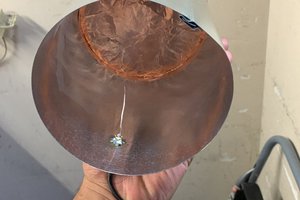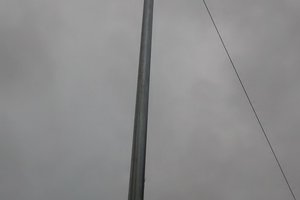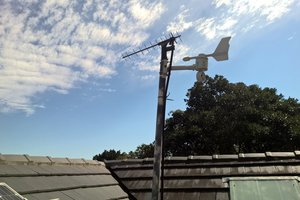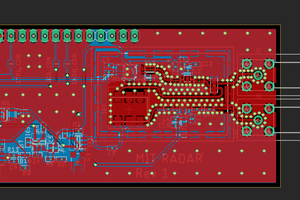Moxon+Yagi Antenna
⚠Experimental: The antenna has not been measured by a vector network analyzer and has only been simulated using MMANA-GAL.
😮Reproduction projects are risky and should be made with care🤭
project background
This antenna design is based on the "Moxon Yagi Satellite Antenna by DUIAU (based on LY3LP's design)". We would like to thank DU1AU and LY3LP for their contributions. The original design diagram is as follows:
Due to the fact that I only have a copper wire with a diameter of 1.25mm as the oscillator, I need to redesign the size of the antenna. I choose to use MMANA-GAL software to simulate the antenna here. I spent one or two days familiarizing myself with and understanding the software usage on Bilibili, and finally produced a finished product based on the simulation results of the software.
design process
Because it is a UV dual band antenna, it is required that the center frequency of the antenna be in the commonly used two frequency bands: 145MHz and 435MHz. Using software to simulate the antenna, I modified the length of the oscillators and the spacing between them while keeping the structure unchanged, and finally obtained the desired results.
First, use the Moxon antenna calculator to calculate the Moxon part and determine its oscillator size. Due to the lack of a suitable Yagi calculator, it was not possible to directly calculate the size and spacing of the Yagi oscillator. Therefore, after determining the size of the Mokson oscillator, modeling and simulation were carried out in MMANA-GAL software. By continuously adjusting the length and distance of the Yagi oscillator, its impedance and standing wave ratio at 435MHz were repeatedly calculated, and its size and distance were finally determined.
Due to the lack of theoretical knowledge, most of the problems encountered during the design process are entrusted to Gemini for advice. For example, to solve the problem of low antenna impedance, the following measures can be taken:
- Increase the size of the antenna. The larger the size of the antenna, the higher the input impedance of the antenna.
- Shorten the length of the feeding point. The shorter the length of the feeding point, the higher the input impedance of the antenna.
- Add a series inductor. Series inductance can increase the input impedance of the antenna.
After adjustment, the software shows that the impedance of the antenna is 51.46 ohms and the standing wave ratio is 1.03 at 145MHz; When the frequency is 435MHz, its impedance is 51.1 ohms and the standing wave ratio is 1.13.
Materials
The production cost of the full antenna is 5.3 yuan (which can be said to be a very poor version, challenging the lowest cost antenna)
From the cafeteria construction site:
- Antenna bracket: PVC water pipe+wooden strip
- Antenna oscillator: Single stranded copper wire with a diameter of 1.25mm
- Connection fixation: packing tape for construction site cardboard boxes
Taobao self purchase:
- Feeder: RG316, SMA outer screw inner hole, length 0.8m (5.3 yuan)
reference material
Simulation software learning
【业余无线电·天线仿真】MMANA-GAL仿真:莫克森天线应该怎样调整
Antenna calculator
Debugging and production
DIY“莫克森+八木”UV双段天线
自己做一根UV段八木天线连接国际空间站转发器能成功吗?
Hope to provide some small help to friends who have seen this document, 73~
 Jmzdd
Jmzdd
 ammarbhayat28
ammarbhayat28
 Dan Maloney
Dan Maloney
